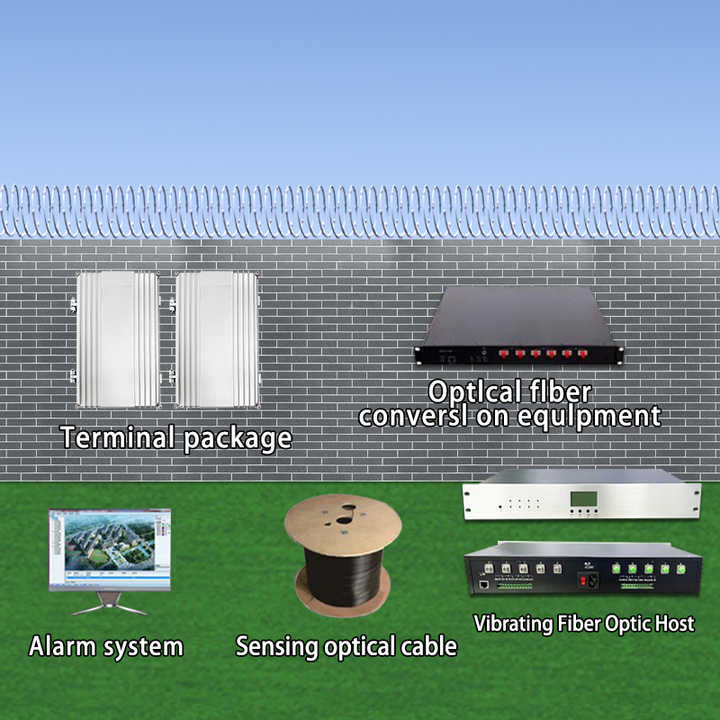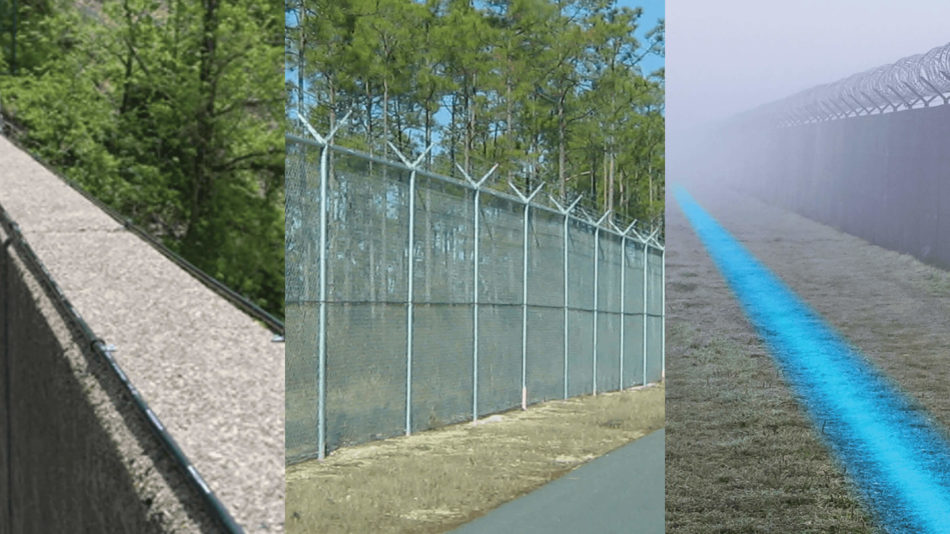The Future of Fiber Security System in High-Tech Security Installations
The Future of Fiber Security System in High-Tech Security Installations
Blog Article
Secure Your Residential Property With Reliable Fiber Optic Safety Solutions
In a period where safety and security hazards are increasingly advanced, the demand for effective security options is paramount. Fiber optic safety and security systems attract attention by offering extraordinary integrity and efficiency, leveraging advanced light transmission innovation to boost security capabilities. These systems not only offer resistance to electro-magnetic disturbance but also guarantee long-term price performance through decreased upkeep requirements. Nevertheless, the decision to purchase such an option entails careful consideration of numerous factors. Understanding the complexities of fiber optic safety can light up the course to securing your building better. What aspects should be discovered to optimize your financial investment?
Advantages of Fiber Optic Security
Fiber optic protection options offer a series of benefits that make them progressively crucial in today's electronic landscape. One of one of the most significant advantages is their remarkable bandwidth ability, which enables the transmission of huge quantities of data over cross countries without considerable signal degradation. This ability is particularly useful for security systems that count on high-definition video security and real-time tracking.
In addition, fiber optic cable televisions are naturally much more secure than conventional copper electrical wiring. They are unsusceptible to electro-magnetic interference, making them less prone to hacking or eavesdropping. This improved security is important for safeguarding delicate data and preserving the integrity of security systems.
Moreover, optical fiber are much more resilient and immune to ecological aspects, such as wetness and temperature level variations, making sure lasting integrity and decreased maintenance expenses. The light-weight nature of fiber optic cables also simplifies installment procedures, permitting for greater flexibility in system design.
Just How Fiber Optic Systems Work
In contemporary safety and security applications, the operation of fiber optic systems counts on the concepts of light transmission with adaptable glass or plastic fibers. These fibers are developed to lug light signals over long distances with minimal loss, making them suitable for transmitting data connected to safety surveillance. The core of the fiber, bordered by a cladding product, ensures that light signals remain included within the core with a sensation referred to as total interior reflection.
When integrated into safety and security systems, fiber optic cable televisions can send data from numerous sensors, such as cams, movement detectors, and alarm systems, to a main monitoring terminal. The high bandwidth capacity of optical fiber permits for the transmission of big amounts of data concurrently, allowing real-time security and prompt response to possible risks.

Types of Fiber Optic Protection Solutions
Different types of fiber optic safety and security services have emerged to improve security and protection throughout different atmospheres. One famous remedy is fiber optic perimeter breach discovery systems (PIDS), designed to check and secure property limits through the detection of resonances and disturbances along fiber optic wires. These systems offer real-time signals, allowing punctual actions to unauthorized accessibility attempts.
An additional efficient remedy is fiber optic video security. This innovation leverages high-definition cams connected using fiber optic cable televisions to send video information over cross countries without significant fiber optic security system loss of high quality. This setup is especially beneficial in extensive locations, such as flight terminals and commercial sites, where standard copper wires may fail.
Additionally, fiber optic sensors are significantly utilized for environmental surveillance, spotting adjustments in temperature, pressure, or acoustic signals that can show safety and security violations or hazardous conditions. These sensors provide high sensitivity and accuracy, making them optimal for important framework defense.

Installment and Maintenance Tips
Efficient installment and maintenance of fiber optic safety solutions are important for guaranteeing their optimal performance and long life. To begin with, it is vital to intend the setup very carefully, thinking about the design of the residential property and recognizing possible susceptabilities. Fiber optic wires should be routed safely, staying clear of sharp bends or spins that could compromise their stability. Use professional-grade adapters and units to ensure robust connections and security from ecological variables.
Throughout setup, it is a good idea to carry out complete screening of the system to validate that all parts are operating appropriately. Routine upkeep checks ought to be set up to check the fiber optic cable televisions for any indications of wear or damage, in addition to to make sure that connections stay protected. Cleaning the connectors periodically is additionally essential to stop signal loss as a result of dirt or debris.
Additionally, keeping an upgraded stock of set up components and their specifications can promote less complicated troubleshooting and upgrades. By sticking to these setup and maintenance pointers, homeowner can take full advantage of the effectiveness of their fiber optic safety solutions, guaranteeing a reliable defense versus potential threats.
Contrasting Expenses and Effectiveness
When reviewing fiber optic safety solutions, recognizing the balance between expenses and effectiveness comes to be critical (security fibers). Organizations must take into consideration the upfront financial investment, continuous upkeep costs, and the lasting value these systems provide. While fiber optic systems may call for a higher first setup price compared to typical copper electrical wiring, their durability and minimized sensitivity to electromagnetic interference often convert to reduced upkeep expenses over time
Efficiency is an additional vital variable; fiber optic safety and security systems supply improved data transmission speeds and boosted reliability. They can cover bigger distances without signal degradation, making them ideal for large buildings or remote areas. Moreover, the high bandwidth ability sustains innovative safety and security applications, such as high-def video clip surveillance and real-time monitoring, which are necessary for comprehensive safety and security administration.
Inevitably, the selection between expense and efficiency must be assisted by details security needs and risk assessments. Organizations should evaluate their special demands, taking into consideration variables like property dimension, protection hazards, and technical innovations. By performing a thorough cost-benefit evaluation, stakeholders can make enlightened choices that line up with their safety goals while guaranteeing a sound investment in fiber optic modern technology.
Verdict
To conclude, fiber optic safety remedies offer significant benefits in terms of efficiency, dependability, and resistance to environmental interferences. These systems boost surveillance capabilities and perimeter safety and security, making them an effective selection for thorough protection. First installment costs might be greater, the long-term advantages, including reduced maintenance and premium functionality, validate the investment. Eventually, the fostering of fiber optic technology represents a forward-thinking strategy to safeguarding homes versus evolving safety and security dangers.
Report this page